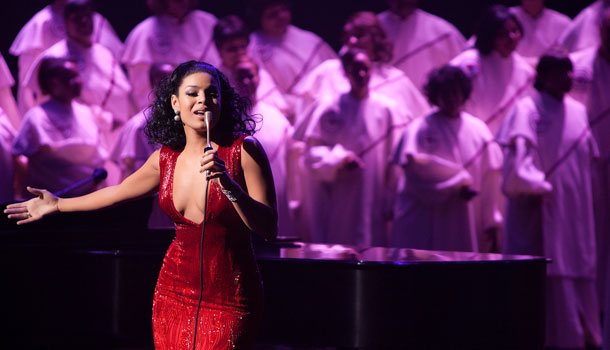
When I wrote “Notice to Black Artists: Your Services Are No Longer Needed” back in February 2014, Iggy Azalea hadn’t yet hit number 1 on the Billboard Hot 100 chart, Hot 97′s Rosenberg hadn’t yet insulted a hip-hop legend, Damon Dash hadn’t yet re-popularized the term “culture vulture,” and hipsters had yet to become the target of my wrath. But here we are, four months later, and the issue of Black music’s cultural misappropriation is back on the table … or maybe it never left.
Are White artists really taking over rap and R&B, or are we just acting like narrow-minded paranoids? Back in May, the Billboard Music Awards named Justin Timberlake as the year’s best R&B artist. Eminem won the best rapper category, Robin Thicke won for best R&B song, and Macklemore for best rap song. There were no Black winners. Just look at who dominates rock & roll, blues, and jazz today. Is history repeating itself?
The truth is that White artists have been part of the R&B and hip-hop landscape for a long time. Acts like Teena Marie, the Doobie Brothers, the Average White Band, and Hall & Oates are often referred to as blue-eyed soul singers. The legendary ’60s musicians from Muscle Shoals, Ala. were behind some of the greatest R&B songs of all times. In hip-hop, some of the world’s most loved rap songs were created by White artists, including “Planet Rock,” which was co-produced by Arthur Baker and Keith LeBlanc. Don’t forget T-La Rock and LL Cool J’s early work with Rick Rubin, the Beastie Boys’ iconic first album, that and a number of Golden Age classics from Rakim, Ultramagnetic MC’s, Organized Konfusion, and Main Source were produced by Paul C (R.I.P.). While fans have raised questions regarding rap and R&B’s White takeover over the last few decades, for the most part, these White artists have been judged on their talents and creative output.
It wasn’t until Vanilla Ice came into the picture that the idea of rap’s misappropriation became a “major” issue in the world of hip-hop. However, his color wasn’t as big of a problem as him being a fraud was. And the real culprit wasn’t even Vanilla Ice, who was too naive and inexperienced to understand how he was being manipulated; it was the music industry who pumped millions into making Mr. Robert Van Winkle the king of rap. Their investment proved successful as rap’s Elvis became a multi-platinum selling artist. Years later, he realized how he had been played and distanced himself from his former rap alter-ego.
Although the Iggys, Mileys, and Riff Raffs of the world are definite examples of cultural misappropriation, there are many talented White rappers and singers like R.A. The Rugged Man or Daley who, although lesser known than Robin Thicke or Macklemore, are generally accepted for their art. With watered-down rap and R&B appealing to pop culture sensibilities, or teenage white girls who make up the majority of the buying public, the issue now is more about how the music industry positions these white commercial artists to become the new faces of Hip Hop and R&B. Twelve-year-old Katelynn from middle America’s suburbs doesn’t know anything about cultural appropriation or the long history of the exploitation of Black artists. She just thinks Justin Bieber is cute and likes to dance to his music in front of the mirror. The industry knows this and profits from Katelynn and her peers, not Hip Hop and R&B purists. And in the meantime, publications like the New York Daily News celebrate the rise of White rappers like it’s all good.
To read the full story, click HERE.


